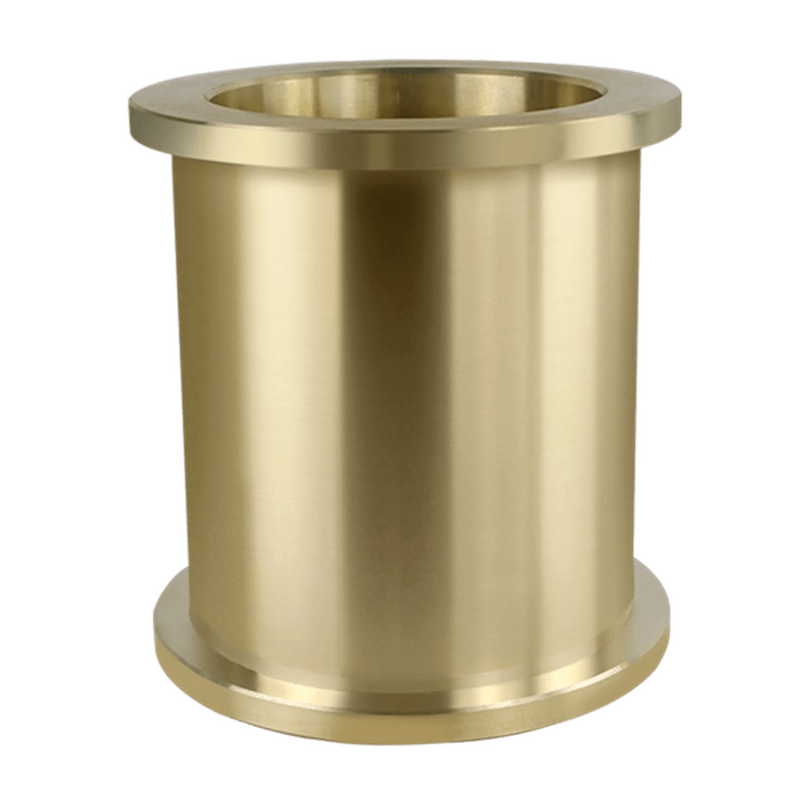
В сфере тяжелого машиностроения выбор подходящих материалов для зубчатых передач имеет решающее значение для обеспечения оптимальной производительности, долговечности и надежности. Алюминиевая бронза стала популярным выбором для изготовления зубчатых передач в тяжелом машиностроении благодаря своей превосходной износостойкости и другим полезным свойствам. В этой статье рассматриваются характеристики износостойкости шестерен из алюминиевой бронзы и их эффективность в тяжелом машиностроении.
Введение в шестерни из алюминиевой бронзы
Алюминиевая бронза — это семейство сплавов на основе меди, содержащих алюминий в качестве основного легирующего элемента, часто с добавками железа, никеля и марганца. Эти сплавы известны своими:
- Высокая прочность
- Отличная коррозионная стойкость
- Превосходная износостойкость
- Хорошие фрикционные свойства
- Теплопроводность
Эти свойства делают алюминиевую бронзу привлекательным вариантом для зубчатых передач тяжелой техники, компоненты которой подвергаются высоким нагрузкам, суровым условиям окружающей среды и непрерывной работе.
Износостойкость шестерен из алюминиевой бронзы
Износостойкость является решающим фактором в работе зубчатой передачи, особенно в тяжелой технике, где выход из строя шестерни может привести к дорогостоящему простою и ремонту. Шестерни из алюминиевой бронзы обладают превосходной износостойкостью благодаря нескольким факторам:
1. Твердость и прочность
Сплавы алюминиевой бронзы, используемые в зубчатых передачах, обычно имеют твердость по Бринеллю от 150 до 280 HB, в зависимости от конкретного состава и термической обработки. Эта твердость в сочетании с высокой прочностью в значительной степени способствует износостойкости.
2. Упрочнение работы
Алюминиевая бронза обладает способностью твердеть под нагрузкой. Это означает, что по мере использования поверхность зубьев шестерни становится более твердой, что еще больше повышает износостойкость.
3. Свойства смазки
Алюминиевая бронза обладает хорошими маслоудерживающими свойствами, что помогает поддерживать смазочную пленку между сопрягаемыми поверхностями шестерен, уменьшая трение и износ.
4. Коррозионная стойкость
Превосходная коррозионная стойкость алюминиевой бронзы помогает предотвратить деградацию поверхности, которая может привести к ускоренному износу.
Сравнительный анализ износостойкости
Чтобы лучше понять износостойкость шестерен из алюминиевой бронзы, давайте сравним ее с другими распространенными материалами шестерен:
| Материал | Относительная износостойкость | Твердость (HB) | Устойчивость к коррозии |
|---|---|---|---|
| Алюминиевая бронза | Превосходно | 150-280 | Превосходно |
| Сталь (4140) | Хороший | 190-330 | Бедных |
| Нержавеющая сталь | Хороший | 160-190 | Очень хороший |
| Бронза (SAE 660) | Умеренный | 60-90 | Хороший |
| Чугун | Хороший | 150-300 | Бедных |
Как показано в таблице, алюминиевая бронза предлагает убедительное сочетание износостойкости, твердости и коррозионной стойкости, что делает ее хорошо подходящей для применения в тяжелом машиностроении.
Факторы, влияющие на износостойкость тяжелого машиностроения
На износостойкость шестерен из алюминиевой бронзы в тяжелом машиностроении влияют несколько факторов:
- Нагрузка: более высокие нагрузки могут ускорить износ, но упрочняющие свойства алюминиевой бронзы помогают смягчить этот эффект.
- Скорость: Скорость передачи влияет на режим смазки и выделение тепла, влияя на скорость износа.
- Смазка: Правильная смазка имеет решающее значение для обеспечения максимальной износостойкости.
- Условия окружающей среды: Воздействие агрессивной среды или абразивных частиц может повлиять на скорость износа.
- Чистота поверхности: Более гладкая поверхность может улучшить износостойкость за счет снижения трения и концентрации напряжений.
Практические примеры: шестерни из алюминиевой бронзы в тяжелом машиностроении
Чтобы проиллюстрировать эффективность шестерен из алюминиевой бронзы в реальных условиях, рассмотрим следующие тематические исследования:
1. Горное оборудование
В большом карьере шестерни из алюминиевой бронзы были установлены в сверхмощную конвейерную систему. После 18 месяцев непрерывной работы шестерни показали минимальный износ по сравнению с ранее использовавшимися стальными шестернями, которые обычно требовали замены каждые 12 месяцев.
2. Морские двигательные установки
Верфь заменила стальные шестерни на шестерни из алюминиевой бронзы в редукторе большого грузового корабля. За 5-летний период шестерни из алюминиевой бронзы изнашивались на 40% меньше, чем стальные, что привело к снижению затрат на техническое обслуживание и повышению надежности.
Оптимизация производительности зубчатых передач из алюминиевой бронзы
Чтобы максимизировать износостойкость и общую производительность шестерен из алюминиевой бронзы в тяжелом машиностроении:
- Правильный выбор материала: Выберите подходящий сплав алюминиевой бронзы в соответствии с конкретными требованиями применения.
- Термическая обработка: Оптимизируйте процессы термообработки для достижения желаемой твердости и микроструктуры.
- Поверхностная инженерия: Рассмотрите возможность обработки поверхности или нанесения покрытий для дальнейшего повышения износостойкости.
- Управление смазкой: Внедрить надежную систему смазки и график технического обслуживания.
- Регулярный осмотр: Проводить периодические проверки для мониторинга износа и своевременного устранения проблем.
Вывод
Шестерни из алюминиевой бронзы обеспечивают исключительную износостойкость в тяжелом машиностроении, превосходя многие традиционные материалы для зубчатых передач. Их уникальное сочетание твердости, способности к деформационному упрочнению и коррозионной стойкости делает их отличным выбором для сложных условий эксплуатации.
Хотя первоначальная стоимость шестерен из алюминиевой бронзы может быть выше, чем у некоторых альтернатив, их превосходная износостойкость часто приводит к снижению долгосрочных затрат за счет уменьшения частоты обслуживания и замены. Поскольку тяжелая техника продолжает развиваться, требуя все большей производительности и надежности, шестерни из алюминиевой бронзы, вероятно, будут играть все более важную роль в обеспечении эффективной и долговечной работы.
При выборе материалов для зубчатых передач для тяжелой техники инженеры и проектировщики должны тщательно оценить конкретные требования применения и рассмотреть алюминиевую бронзу как вариант с высокими эксплуатационными характеристиками. Его доказанная износостойкость и другие полезные свойства делают его ценным материалом для повышения производительности и долговечности оборудования.
